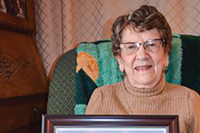Taking the smart out of growth
 North Carolina House Bill 94 (Amend Environmental Laws) has passed the House and Senate and awaits the governor’s signature. HB 94 is a large (43 pages), unwieldy piece of legislation, much of it aimed at dismantling tried, true and effective environmental policy that has pushed North Carolina to the forefront when it comes to highlighting the role good environmental protection plays in creating successful, sustainable economic growth while protecting the vibrant cultural and natural settings that create community and a sense of place.
North Carolina House Bill 94 (Amend Environmental Laws) has passed the House and Senate and awaits the governor’s signature. HB 94 is a large (43 pages), unwieldy piece of legislation, much of it aimed at dismantling tried, true and effective environmental policy that has pushed North Carolina to the forefront when it comes to highlighting the role good environmental protection plays in creating successful, sustainable economic growth while protecting the vibrant cultural and natural settings that create community and a sense of place.
Waynesville panel may recommend rolling back rear parking mandate
A movement is afoot to roll back some of the smart growth principles of Waynesville’s land-use plan by loosening commercial development guidelines.
A blue-ribbon committee appointed by the town has spent the past few months combing through the town’s land-use plan, which espouses a progressive “new urbanism” philosophy.
The plan promotes pedestrian-friendly development and aesthetic standards for commercial development in an attempt to preserve small-town character. Several members of the committee question whether the new urbanism model is realistic, however.
Joe Taylor, one of committee members, said the ideals in the land-use plan are utopian and don’t take current development patterns into account.
“It can be done if you start with a clean sheet of paper. If we are going to create a new town, fine, go for it,” Taylor said.
The committee’s composition is weighted toward business interests.
“We have people on that board making recommendations that make sense for doing business,” Taylor said.
Public Works Director Fred Baker said that commercial interests were perhaps underrepresented on the citizen task force that helped write the land-use plan earlier this decade. The current blue-ribbon committee was constituted to give them a voice, especially given their ongoing complaints over the regulations.
Ron Leatherwood, a contractor on the committee, said he didn’t get involved when the town was writing the guidelines, despite literally dozens of public input meetings held over the course of three years.
“A lot of us in the business community didn’t realize the consequence of the written word on the table,” Leatherwood said. “At the end of the day, I am not seeing us doing a great deal of changes except in two or three areas. We have to have some type of hybrid of this.”
But Baker isn’t sure a hybrid is possible. Baker has long had the 13 principles of new urbanism tacked up on the wall of his office. He said they work in unison, and if you ignore more than two or three, the whole vision collapses.
Leatherwood questioned whether Waynesville in general has the population to support new urbanism. The concept is based on people living, working and shopping in a close-knit, pedestrian-friendly environment, but it relies on residential populations being able to support nearby mixed-use commercial districts.
Taylor also wonders whether the model is possible today. Society no longer functions like it did in the 1950s, when people walked to their neighborhood grocer, Taylor said. But advocates of new urbanism want to remake society by forcing commercial developments into a mold that doesn’t work on the ground, Taylor added.
Parking lot saga
One of the most contentious points addressed by the committee is parking lot configurations for new commercial development. The town’s plan bans parking lots directly in front of buildings. By placing parking to the rear and side of businesses instead, the streetscape is defined by building facades, sidewalks and street trees rather than expansive asphalt parking lots.
Despite the aesthetic benefits, the regulation is not always practical, according to some committee members.
“Parking, as we knew going into it, is probably going to be the biggest issue,” said Town Planner Paul Benson. “I think they all feel like we are being too restrictive by not allowing any parking in front of the building. Certainly we have heard that from the development community.”
Taylor said it is ridiculous to ban parking in front of buildings.
“People tend to go where the crowd is,” Taylor said. “That is pretty much human nature to say, ‘That place is doing business, let’s go in there.’ Hide all the vehicles and you take that factor away.”
Baker said the purpose of the rule is to create an “active pedestrian environment.”
“That is difficult to do if you have only left a little strip of sidewalk between the parking lot and road. It visually sets the automobile above all other considerations,” Baker said.
Craig Lewis, a planning consultant with the Lawrence Group in the town of Davidson who is steering the review process, said auto-centric development doesn’t stand the test of time. One strip mall is simply abandoned by shoppers and merchants alike when a new one comes along.
“Areas that are pedestrian friendly have become more successful than areas that are automobile friendly,” Lewis said. “We are talking about creating places that people care about.”
But Leatherwood said the “new urbanism” vision can still be achieved through other techniques to buffer the look of asphalt parking lots.
“By still having tree canopies or street walls or some kind of streetscape, you don’t have the impact of a large parking lots directly on the street,” Leatherwood said. “You can soften the street.”
Committee member Patrick McDowell pointed to a small strip mall in the greater downtown area called Haywood Square, which wouldn’t be allowed under the town’s current land-use plan.
Engineer Patrick Bradshaw countered that it’s not a bad thing to force developers to think outside the box.
“Surely we are brighter than just a strip mall duplicated time and again. What we keep trying to do is move these strip malls around. While it is suitable for some locations, we can do better,” said Bradshaw, who sits on the committee.
Lewis said Waynesville’s land-use plan has been a trendsetter.
“More and more communities are doing it, but it is still not the norm and certainly not in the mountains. I think Waynesville has led a lot of conversations in the mountains because they have said ‘We care about the aesthetics of our community,’” Lewis said.
But even Lewis isn’t a purist when it comes to no parking in front. To insist there can never be parking in front of a building is impractical, Lewis said. Lewis has proposed a compromise that would allow a portion of parking to be allowed in front of buildings in a few of the town’s high-traffic commercial areas, namely Russ Avenue, the Dellwood/Junaluska area and the interchange near the new Super Wal-Mart.
“I think it is a good compromise,” Benson said. “Some districts lend themselves to new urbanism more than others.”
But several committee members want the compromise extended to more parts of town. They also want more parking spots in the front than the limited number Lewis has proposed.
That debate has yet to fully play out and the differences of opinion could ultimately lead to a split vote in the committee’s final recommendation.
What’s next
The committee is still a few months away from making its recommendations. The task has been rigorous. The committee had been meeting every other Wednesday at 7:30 a.m. for three months, allowing the members to get on with their workday by 9 a.m. They have now ramped up the schedule to meet every week.
“It is a hard-working advisory committee,” Baker said. “The town is certainly getting a lot of work and a lot of good ideas from them.”
Baker noted that the recommendations will be just that, however.
“There might be some that don’t necessarily make it through,” Baker said.
Final approval resting with the town’s elected leaders following public input.
“I don’t see the town board wanting to reverse course completely on the parking issue,” Benson said. “I think we are all just looking for a way to add some flexibility without compromising the pedestrian focus.”
Planning a new future for Jackson’s business growth
The town of Sylva is embarking on a smart growth plan that could reshape some of the town’s more unsightly commercial corridors in coming decades.
A how-to crash course in smart growth
Ginny Faust, a professional planning consultant, posed a tough question to members of the Sylva Town Board and planning board last week.
A new approach to smart growth
“What we’re trying to do here is reduce the impact of development. That’s really what conservation is, the wise use of resources.”
— Blair Bishop, Haywood Community College
How come this isn’t done all the time?
Franklin passes plan to help guide growth
By Sarah Kucharski • Staff Writer
Franklin’s proposed Principles of Growth flew past town aldermen Monday night in a mere 15 minutes, earning unanimous approval and setting a new policy for directing future growth.









